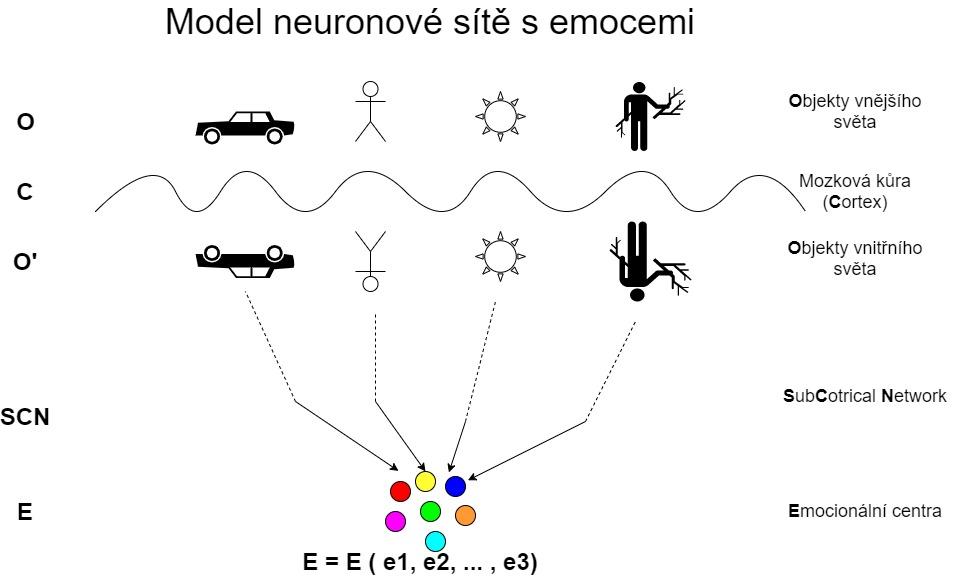As part of the emotional stability teaching project, we work with the hypothesis that the phenomenon of neuron plasticity and the existence of emotional centers in the human brain are sufficient to explain the occurrence of a number of serious mental disorders and diseases. Both of these assumptions have been scientifically confirmed many times and accepted both by scientists and the general public.
In a very simplistic view, we could say that the plasticity of neurons that under normal circumstances underlies human memory and all thinking can lead to an excessive number of connections to emotional centers. Under unfavorable circumstances, these excessive connections (excessive connectivity) can lead to the fact that the person in question is constantly exposed to extreme negative emotions, which in turn leads to the loss of the meaning of any action and to the collapse of all aspects of human life. To schematically represent the microscopic nature of this phenomenon, we use the diagram shown below.


